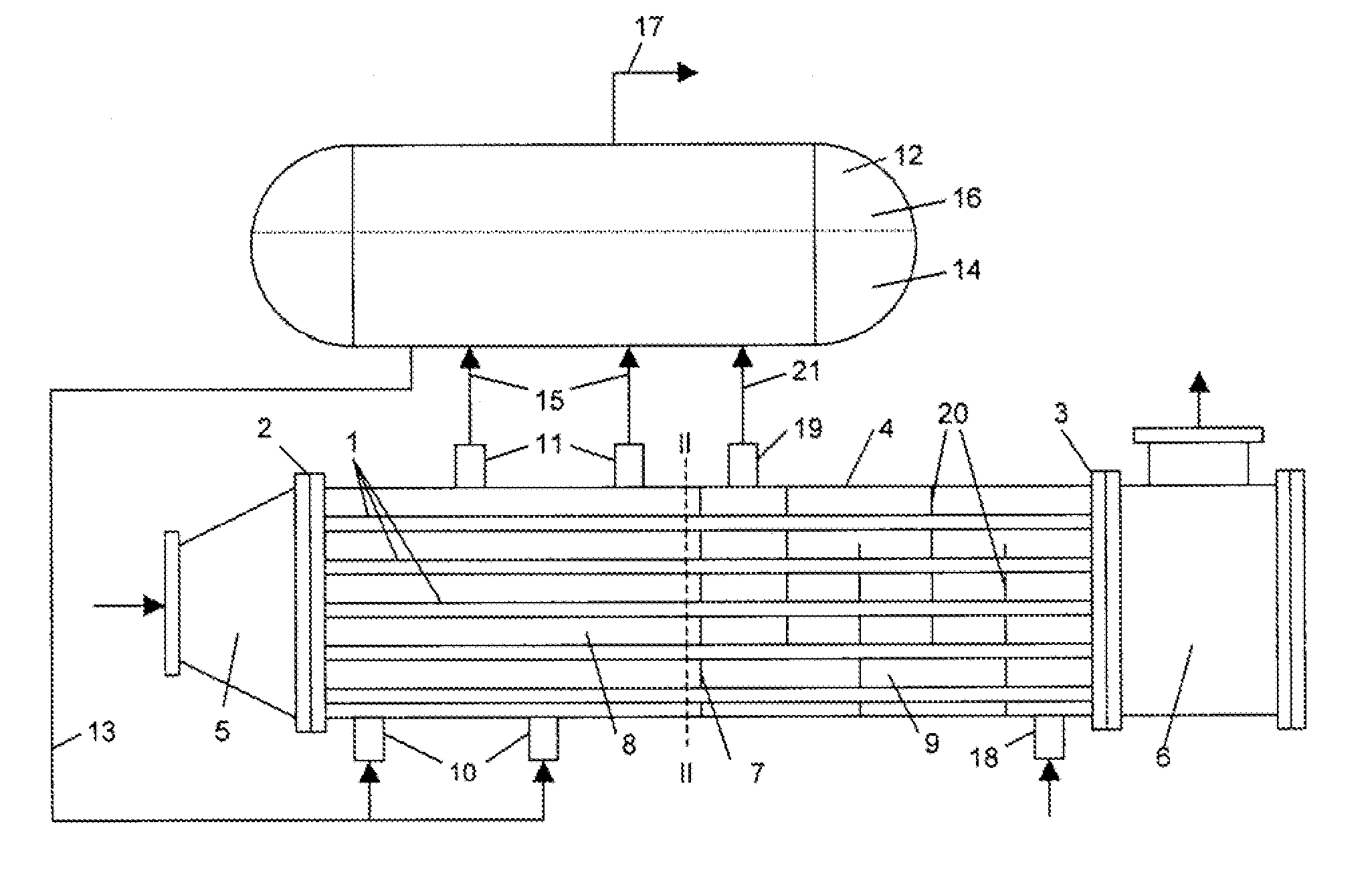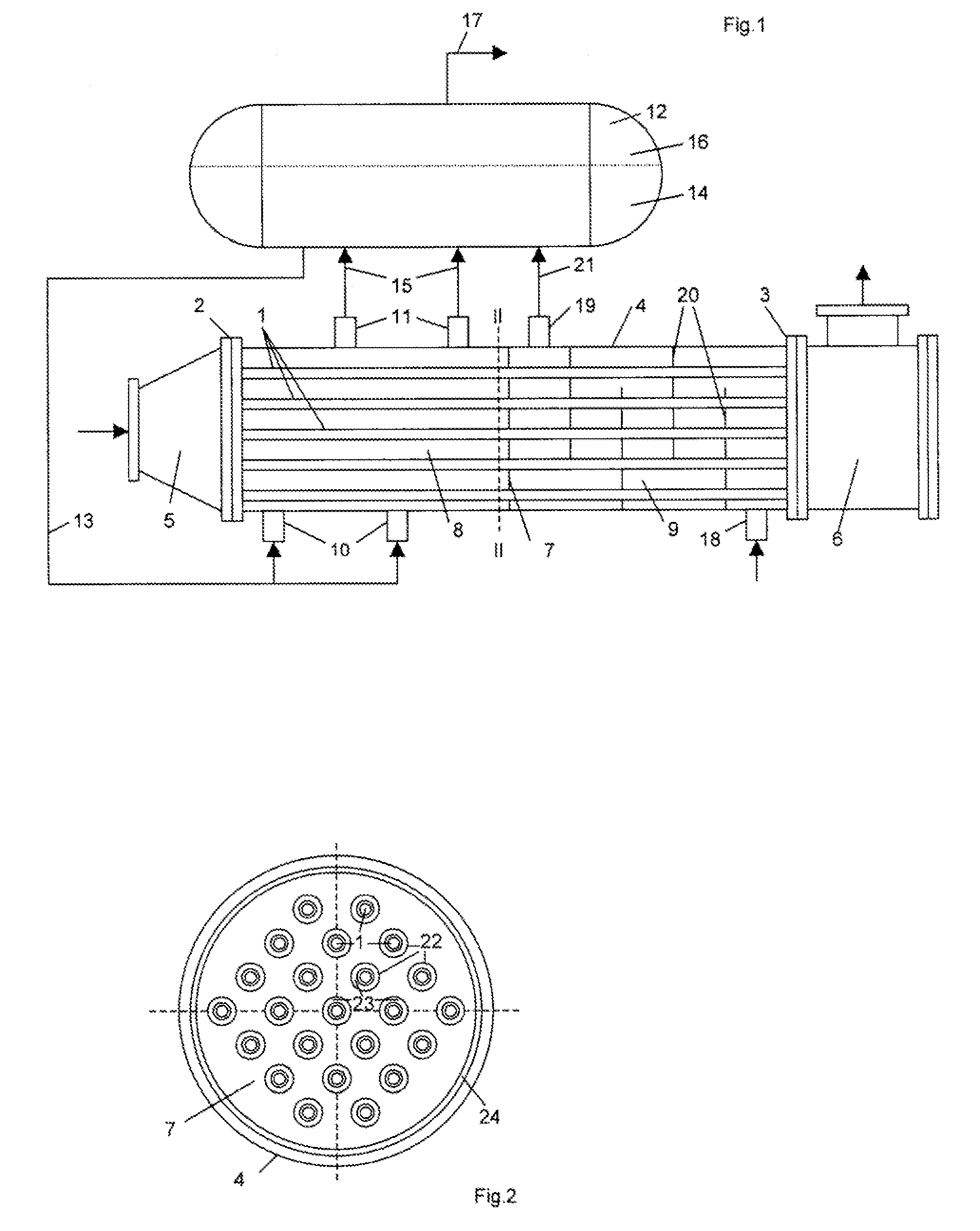Heat exchanger for cooling reaction gas
a technology of reaction gas and heat exchanger, which is applied in the direction of machines/engines, lighting and heating apparatus, hydrocarbon oil treatment products, etc., can solve the problems of reducing the overall pressure loss of the reaction gas in the cooler, increasing the yield of ethylene, propylene, butadiene, etc., and reducing the structural build-up of the reaction gas. , the effect of reducing the build-up
- Summary
- Abstract
- Description
- Claims
- Application Information
AI Technical Summary
Benefits of technology
Problems solved by technology
Method used
Image
Examples
Embodiment Construction
[0016]Referring now to the drawing in detail, the illustrated heat exchanger serves for the cooling of reaction gas in an ethylene plant. The heat exchanger is comprised of a tube bundle of straight heat exchanger tubes 1, which are held in respective tube plates 2, 3 at both ends of the tube bundle. In the drawing, only a few of the heat exchanger tubes 1 are shown to facilitate illustration. Bores extend through each of the tube plates 2, 3; one of the heat exchanger tubes 1 is inserted into each of the bores and is welded to the tube plates 2, 3 via a weld seam. The tube bundle is surrounded by an external jacket or shell 4, which together with the respective tube plates 2, 3 delimits an inner chamber through which flows a coolant or cooling agent.
[0017]Respectively adjoining the tube plates 2, 3 on the gas introduction side and on the gas discharge side is an end chamber, namely the inlet chamber 5 and the discharge chamber 6. Each of the inlet chamber 5 and discharge chamber 6 ...
PUM
 Login to View More
Login to View More Abstract
Description
Claims
Application Information
 Login to View More
Login to View More - R&D
- Intellectual Property
- Life Sciences
- Materials
- Tech Scout
- Unparalleled Data Quality
- Higher Quality Content
- 60% Fewer Hallucinations
Browse by: Latest US Patents, China's latest patents, Technical Efficacy Thesaurus, Application Domain, Technology Topic, Popular Technical Reports.
© 2025 PatSnap. All rights reserved.Legal|Privacy policy|Modern Slavery Act Transparency Statement|Sitemap|About US| Contact US: help@patsnap.com


